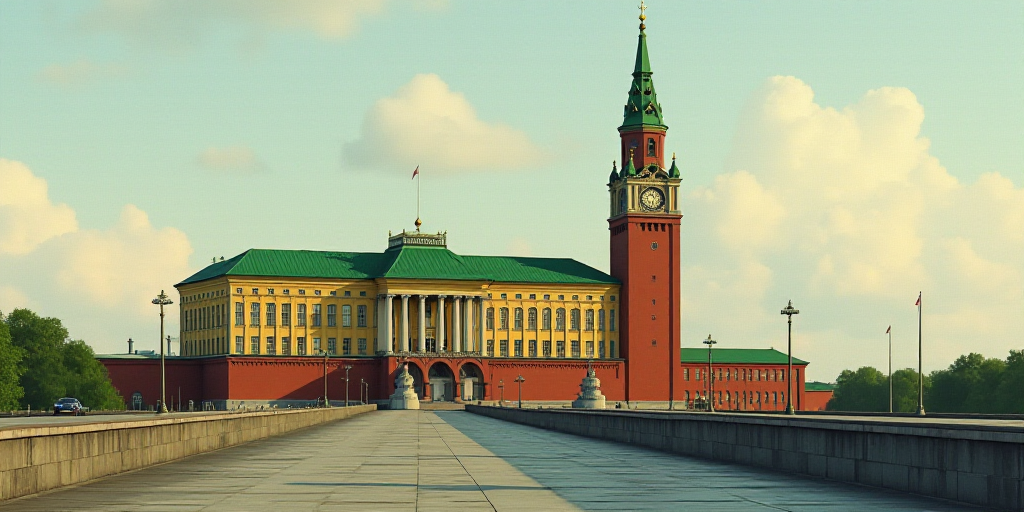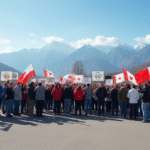Background on Key Figures and Context
The Kremlin has stated its readiness to negotiate with Ukraine and requires “time” to respond to the serious statements made by US President Donald Trump, who gave Russia a 50-day ultimatum to end its conflict in Ukraine, initiated in 2022.
Donald Trump, the 45th President of the United States, has been actively trying to broker a peace agreement between Russia and Ukraine since his return to the White House in January. Trump had previously campaigned on the promise of resolving the conflict within 24 hours.
Vladimir Putin, the President of Russia since 2012, has repeatedly rejected ceasefire calls and insists that Ukraine abandon its NATO membership aspirations and cede four regions, including Crimea annexed in 2014.
Trump’s 50-Day Ultimatum and Military Aid
On Monday, Trump issued a 50-day ultimatum to Russia, warning of severe sanctions if the conflict in Ukraine is not resolved. He also announced the shipment of military material to Ukraine, funded by NATO members.
Kremlin spokesperson Dmitri Peskov acknowledged the seriousness of Trump’s statements, stating that Russia needs time to analyze and consider President Putin’s response.
Peskov criticized the decision made in Washington, by NATO countries, and directly in Brussels, suggesting that Kyiv might perceive it as a signal to prolong the war rather than promote peace.
Russian Perspective and NATO Involvement
The Kremlin expects proposals from Ukraine for a third round of negotiations following two unsuccessful cycles of discussions.
Russia’s primary trading partner in 2022 was China, accounting for nearly 34% of Russia’s total exports. Other significant partners included India, Turkey, and Belarus.
China responded to Trump’s threats by stating that coercion or pressure cannot resolve issues, according to a Chinese Foreign Ministry spokesperson.
NATO’s Military Aid to Ukraine
Under the agreement revealed by Trump and NATO Secretary General Mark Rutte, the alliance will purchase military equipment from the US, including Patriot anti-missile batteries, which will then be supplied to Ukraine.
Trump emphasized that “tens of thousands of millions of dollars’ worth of military equipment will be bought from the US and distributed quickly to the battlefield,” via NATO.
Impact of the Conflict on Ukraine and Regional Dynamics
Since Russia launched its offensive, hundreds of thousands have perished, and millions have been displaced from their homes in eastern and southern Ukraine, ravaged by bombardments and combat.
Putin’s demands for Ukraine to abandon NATO membership and cede territories are rejected by Ukraine and its Western allies, viewing them as a de facto surrender.
Key Questions and Answers
- What is the main issue at hand? The primary concern is Russia’s ongoing conflict in Ukraine, to which US President Donald Trump has given a 50-day ultimatum to resolve.
- Who are the key figures involved? The main figures are US President Donald Trump, Russian President Vladimir Putin, and NATO Secretary General Mark Rutte.
- What is Trump’s approach to resolving the conflict? Trump has been actively trying to broker a peace agreement between Russia and Ukraine, applying pressure on both parties to reach a resolution.
- What is Putin’s stance on the conflict? Putin has repeatedly rejected ceasefire calls and insists that Ukraine abandon its NATO membership aspirations and cede territories, including Crimea.
- What is NATO’s role in the conflict? NATO will purchase military equipment from the US, including Patriot anti-missile batteries, which will be supplied to Ukraine.
- What are the consequences of not resolving the conflict within 50 days? If there is no resolution within 50 days, the US will impose secondary tariffs on Russia’s allies.






